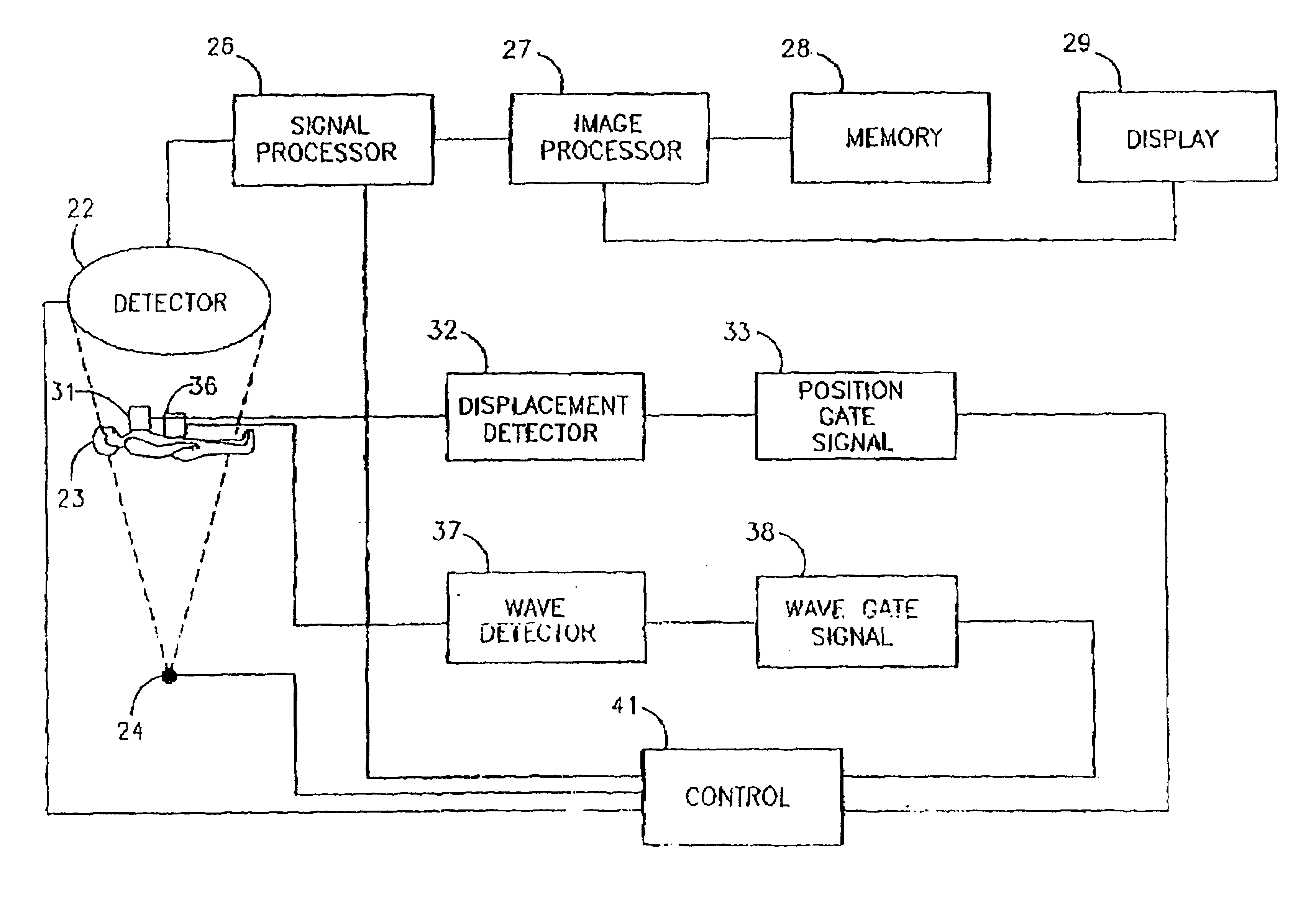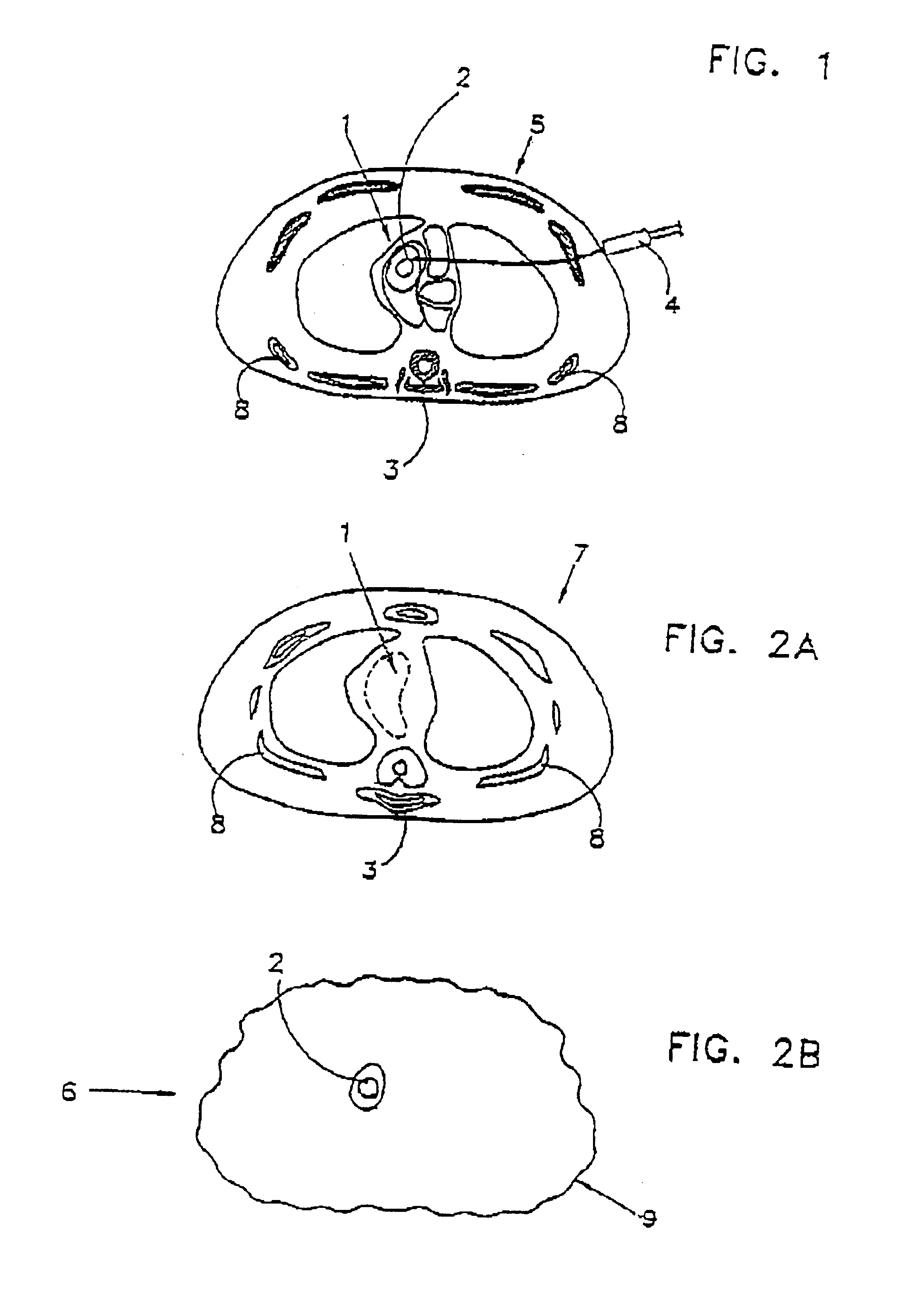Registration of nuclear medicine images
a nuclear medicine and image technology, applied in the field of diagnostic imaging, can solve the problems of affecting the accuracy of the image,
- Summary
- Abstract
- Description
- Claims
- Application Information
AI Technical Summary
Benefits of technology
Problems solved by technology
Method used
Image
Examples
Embodiment Construction
[0034]The present invention does not require the use of any specific STET device, and for most devices the invention can be practiced by changes and / or additions in image processing and registration. In addition, it is possible to use the present invention with NON-STET devices, provided that the SPECT and SPTCT images can be registered to each other.
[0035]FIG. 1 in U.S. Pat. No. 5,210,421 shows a typical STET camera assembly which is used for acquiring STET images.
[0036]The process for acquiring these images typically includes:[0037](a) placing a patient on a couch, so that the part to be studied will be in an examination area;[0038](b) injecting a radiopharmaceutical into the patient;[0039](c) acquiring pairs of SPTCT and SPECT images using one or more detectors;[0040](d) rotating the detector(s) around the examination area, in order to acquire a plurality of image pairs;[0041](e) transforming the plurality of image pairs into a multi-slice topographical STET image, a three dimens...
PUM
 Login to View More
Login to View More Abstract
Description
Claims
Application Information
 Login to View More
Login to View More - R&D
- Intellectual Property
- Life Sciences
- Materials
- Tech Scout
- Unparalleled Data Quality
- Higher Quality Content
- 60% Fewer Hallucinations
Browse by: Latest US Patents, China's latest patents, Technical Efficacy Thesaurus, Application Domain, Technology Topic, Popular Technical Reports.
© 2025 PatSnap. All rights reserved.Legal|Privacy policy|Modern Slavery Act Transparency Statement|Sitemap|About US| Contact US: help@patsnap.com



